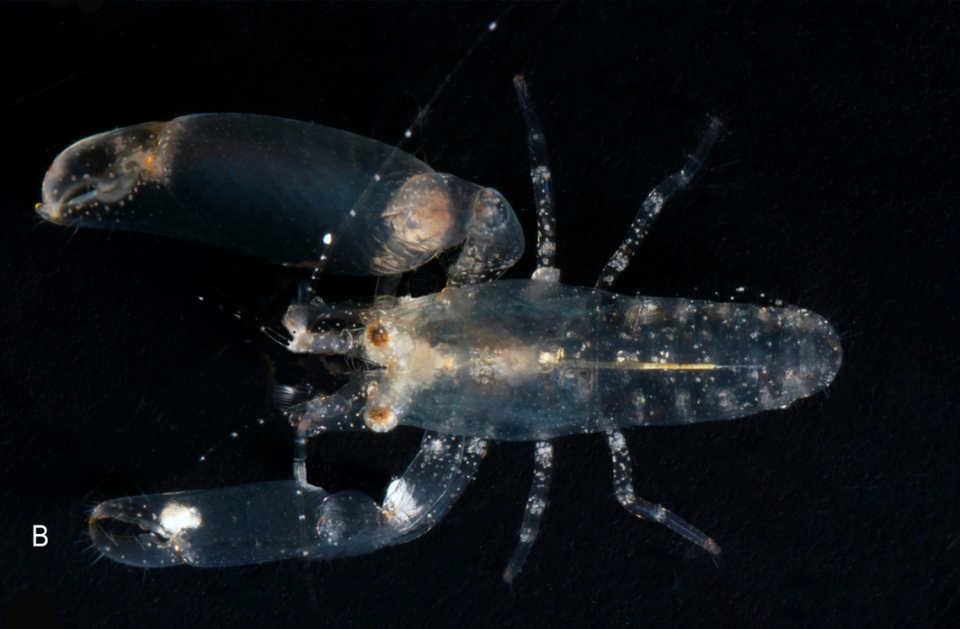Pregnant sea creature — a ‘sewer’ dweller — found in Caribbean. It’s a new species
Off the coast of a Dutch Caribbean island, a pregnant sea creature went about its day. The animal was living symbiotically inside the waste-excreting holes of a host organism — until it caught the attention of scuba diving scientists.
Charles Fransen was trying to document every species of shrimp that lives in the Dutch Caribbean, a collection of islands off the coast of South America that are part of the Netherlands, he wrote in a study published Dec. 15 in the journal Zootaxa.
During his research, Fransen encountered six shrimp that he didn’t recognize, the study said. He took a closer look at the “speckled” animals and realized he’d discovered a new species: Periclimenaeus cloacola, or the sewer-dwelling shrimp.
Sewer-dwelling shrimp are “small,” reaching less than half an inch in length, the study said. They have a “smooth” body “speckled” with white and brown spots. Pregnant females were found with “over a hundred” eggs, the study said.
A photo shows a female sewer-dwelling shrimp while pregnant. The center of its body has tannish brown coloring while the edges seem translucent. Small brown and white dots cover its entire body.
Discover more new species
Thousands of new species are found each year. Here are three of our most eye-catching stories from the past week.
→ 8-eyed creature — with personality like 'Satan' — discovered
→ 'Ghost'-like creature with 'ample' genitalia found at power plant
→ 'Cryptic' 3-foot-long creature found in mangroves of Myanmar
Fransen said he named the new species after the Latin words for “sewer” and “dweller” because of the shrimp’s preferred habitat.
Sewer-dwelling shrimp live in the cloacal cavity, or the waste-excreting holes, of a sea creature known as Diplosoma listerianum, the study said.
Diplosoma listerianum belong to a group of invertebrate marine animals commonly referred to as sea squirts because they have two openings for sucking in and spitting out water. Like corals, Diplosoma listerianum is a colonial organism that grows in “delicate” sheets, often over various marine life such as seagrasses or shells, according to the Smithsonian Environmental Research Center.
A video shared on YouTube by Fransen shows a sewer-dwelling shrimp moving around the waste-excreting holes of a Diplosoma listerianum. In one video clip, the new species of shrimp appears smaller than Fransen’s fingernail.
Another photo shows a male sewer-dwelling shrimp. It doesn’t have the same tan-colored center as the pregnant female. Instead, its body appears almost entirely translucent.

So far, sewer-dwelling shrimp have only been found in the shallow waters of Curaçao and Bonaire, two Caribbean islands that are part of the Kingdom of the Netherlands, the study said. Curaçao is considered a semi-autonomous country within the Netherlands while Bonaire is considered a municipality similar to those in the country’s mainland. The pair of neighboring islands are about 40 miles north of Venezuela.
The new species was identified by its head shape, body shape and other subtle physical features, the study said.
Fransen also studied 45 other species of shrimp.
8-eyed creature with ‘long,’ ‘golden’ hair found perched on tree. It’s a new species
Eyeless cave creature — with ‘pear-shaped’ genitalia — discovered as new species
Eyeless cave creature — with ‘pear-shaped’ genitalia — discovered as new species

